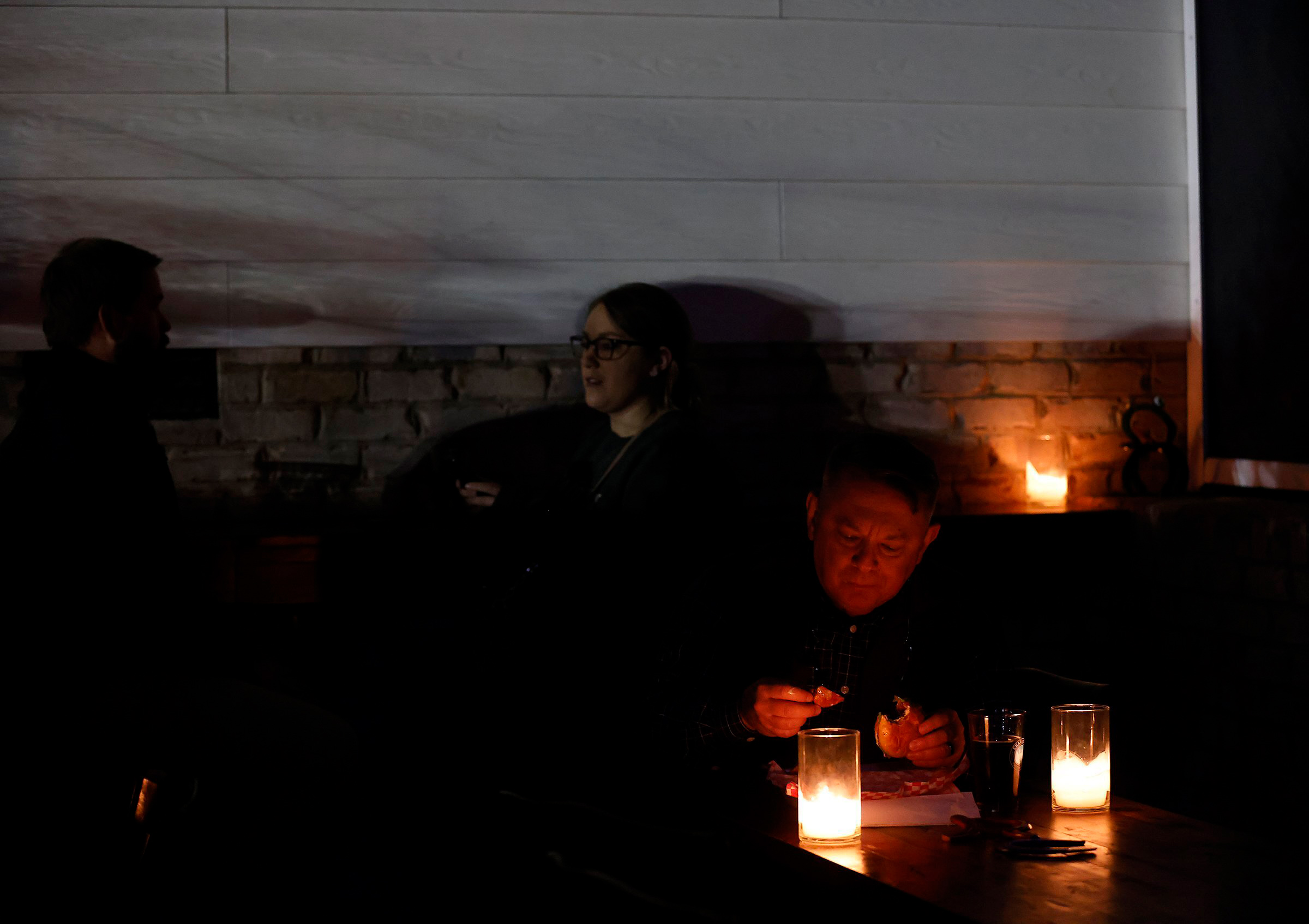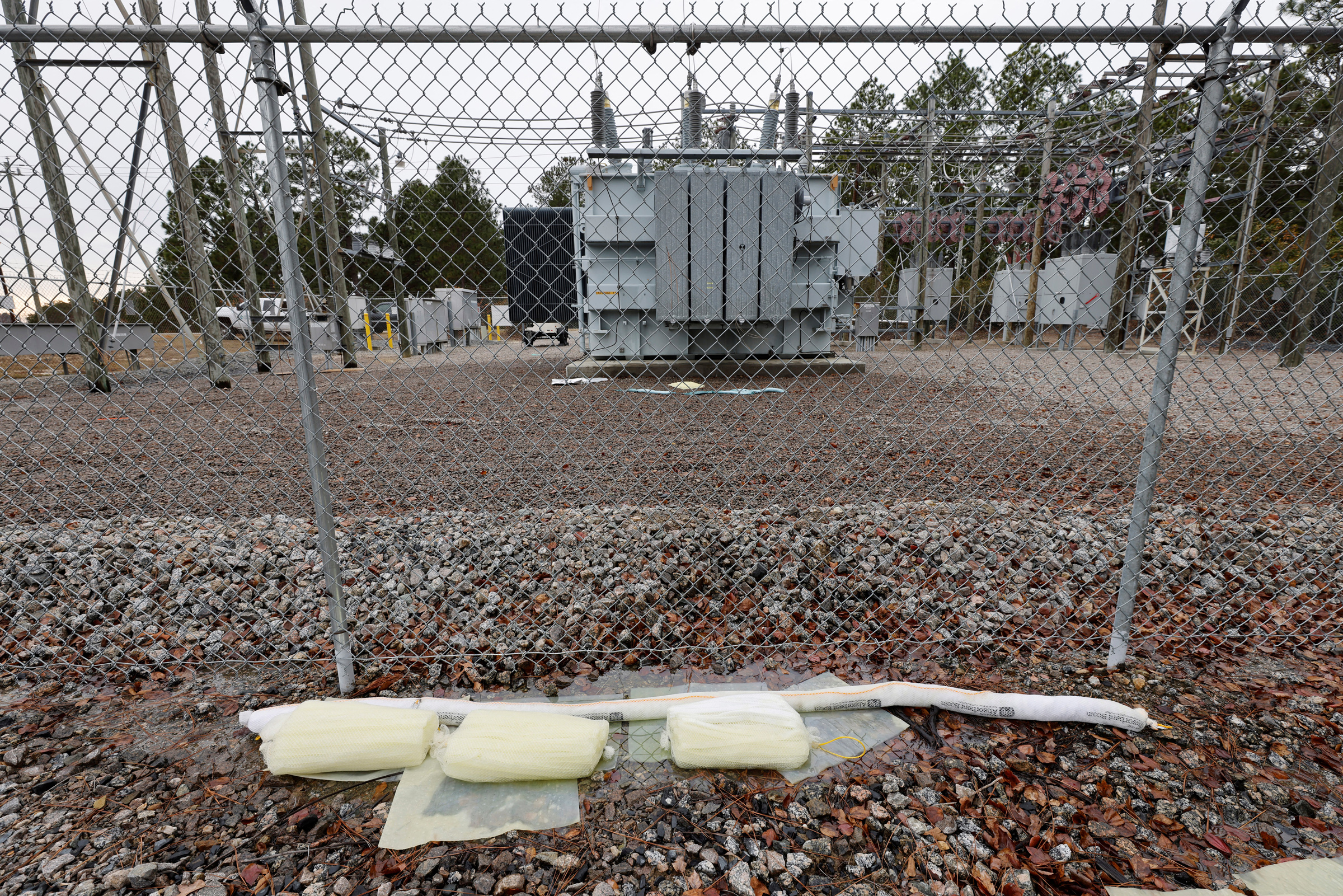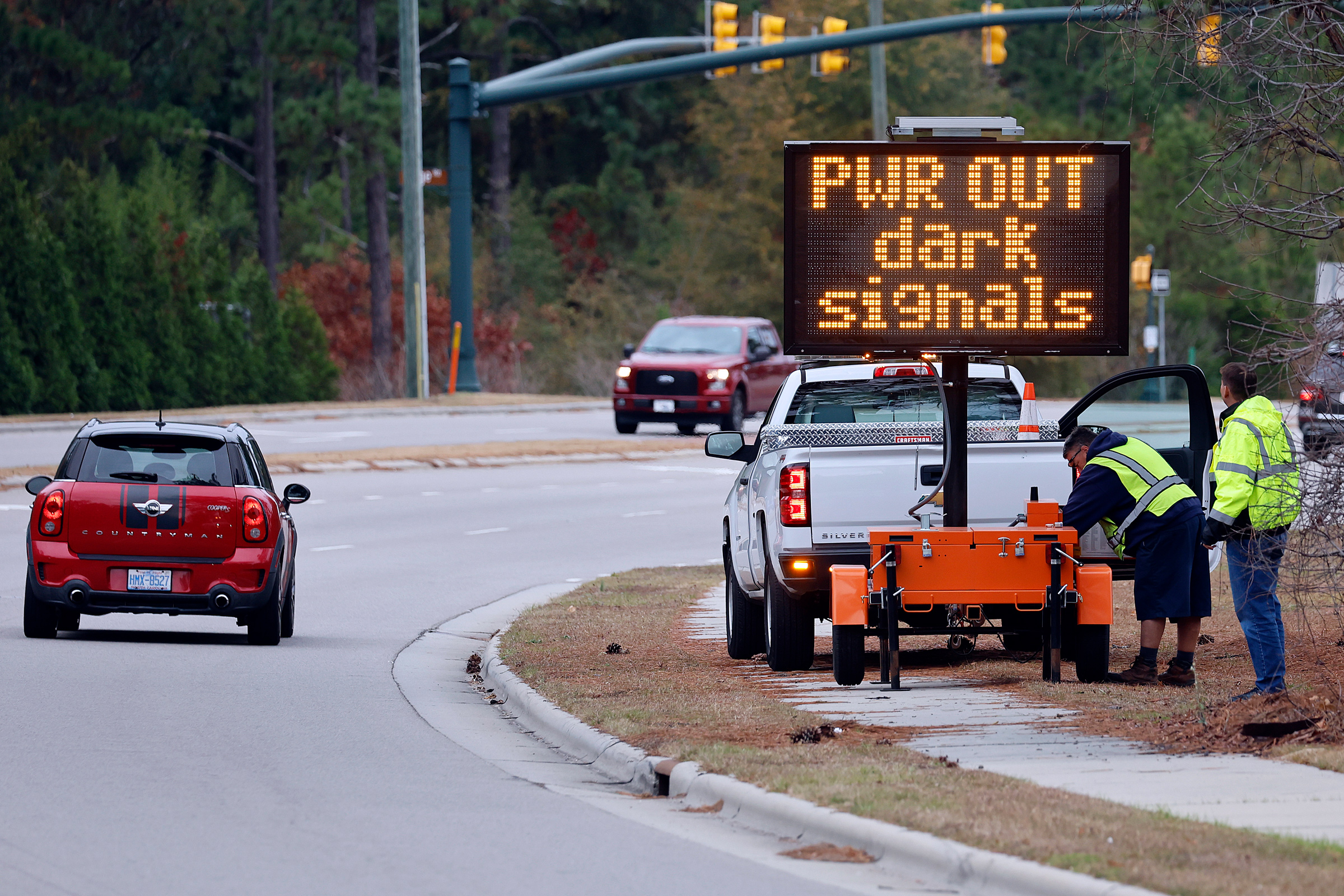
A string of mysterious attacks on power stations across the U.S. has rekindled fears about the vulnerabilities of America’s electricity infrastructure, which security officials have warned presents a growing target to extremists and saboteurs.
Attacks and suspicious activity at U.S. power stations reached a decade-long high last year, with more than 100 reported incidents in the first eight months of 2022, according to a TIME review of the Department of Energy’s most recent data, which runs through August. Since then, there have been at least 18 more publicly reported attacks or potential attacks on substations and power plants in Florida, North Carolina, Oregon, South Carolina, and Washington.
The tally includes at least half a dozen at Duke Energy facilities in Florida and at least six others on electrical substations in the Pacific Northwest in November and December. In one attack on Thanksgiving, two intruders cut through the fencing around a substation in Clackamas County, Ore., and “used firearms to shoot up and disable numerous pieces of equipment and cause significant damage,” according to an incident report. And in the most high-profile incident, intruders breached the gates and opened fire on two Duke Energy substations in Moore County, N.C., in early December, damaging equipment in what local authorities called a “targeted” attack that cut off the power for more than 45,000 people.
It’s not clear who’s behind all this. But the surge has alarmed federal officials and security analysts, who warned last year of “credible, specific plans” by violent domestic groups to attack the power grid. Violent conspiracies focused on targeting and destroying energy infrastructure have become one of the top themes on extremist social-media platforms and messaging apps. In each of the last three years, law enforcement has foiled plots by right-wing extremists designed to sow chaos by attacking America’s electrical infrastructure.
Now, officials say, the rise in incidents suggests the perpetrators may be drawing inspiration from one another, fine-tuning strategies to pursue potentially more damaging copycat attacks. Each incident—and each suspect that escapes undetected—further emboldens a determined cadre of criminals and highlights the U.S. power grid as a target.
“Domestic terror groups understand that citizens losing power from gunfire or sabotage is an easy way to receive media attention, which they crave,” says Brian Harrell, a former Assistant Secretary for Infrastructure Protection at the U.S. Department of Homeland Security (DHS), who tells TIME he expects a significant increase in attacks on U.S. energy infrastructure in 2023. “The utility sector has a real problem on its hands. Power stations are an attractive target, and domestic terror groups know that destroying this infrastructure can have a crippling effect.”

The motives and methods of the recent attacks vary. Some of the perpetrators may have been seeking money, not mayhem. Federal authorities say that the attacks on four substations in western Washington State on Christmas Day, which left more than 14,000 residents in the dark, were perpetrated by two men seeking to knock out power so they could commit a robbery.
Yet many others remain mysterious to law enforcement and federal regulators. The case that most concerns authorities is the Dec. 3 attack on two power stations in Moore County, N.C. A month later, despite an ongoing FBI investigation continues, no one has been arrested for acts of sabotage that left more than 45,000 people without power amid frigid temperatures. Law enforcement officials, who have offered up to $75,000 for anyone who can provide information that would lead to the arrest of those responsible, have said that the perpetrators took aim at the substations with firearms with the intention to cause widespread outages.
Several experts and former officials told TIME they believed that attack was committed by someone who knew what they were doing. “I’m certain that the North Carolina attackers have insider knowledge on substations and critical energy infrastructure and knew how to attack, undetected,” says Harrell, noting they knew where to access sites and what to shoot at—and that no security would be in place.
Jon Wellinghoff, who served as chairman of the Federal Energy Regulatory Commission (FERC) from 2009 to 2013, says the incident in Moore County was the most sophisticated he had seen since a 2013 attack on the Pacific Gas and Electric Company’s substation near San Jose, Calif., in which multiple gunmen fired on the facility and caused $15 million in damages. No one was ever arrested in that case.
Whoever perpetrated the attack in North Carolina “were fairly sophisticated,” Wellinghoff says. “They wanted to knock out a particular area of that county…and were able to select the substation that would knock out that entire line.”
The effectiveness of the attack in Moore County is likely to lead more bad actors or extremist groups to “learn more information about the infrastructure itself and how it operates” online in order to carry out similar attacks, Wellinghoff adds. “You have the ability now to look at selected areas of the country and knock those out depending on how they are interconnected, and that information of where those lines and those substations are is all available to anybody on the Internet.”
Read More: The United States of Political Violence.
That makes the U.S. power grid—which spans more than 7,300 power plants, 55,000 transmission substations and 160,000 miles of high-voltage power lines—a particularly soft target for determined attackers. “It’s inherently vulnerable, because it’s constructed in such a way that if one part of it can be destroyed or impaired it can have a very significant impact on other larger parts of it very quickly,” says Dr. Granger Morgan, a professor of engineering at Carnegie Mellon University who chaired three National Academy of Sciences reports on the power grid for the federal government. “Kind of like dominoes.”
Saboteurs have been taking aim at this infrastructure for decades. In some parts of the country, for instance, hunting season has always brought an uptick in troublemakers taking potshots at insulators and other equipment. But the attacks like the ones on the North Carolina substations are “a different ballgame,” FERC Commissioner Mark Christie said at the agency’s December meeting, calling them “sophisticated.”
Morgan has also noticed a shift in recent incidents. “These increasing attacks on things like large transformers and circuit breakers are significantly more troubling,” he says, raising concerns of a “copycat effect” which could eventually lead to a more coordinated attack by perpetrators with the knowledge to cause significant damage. “Many of these [power stations] are only blocked off by chain-link fences in the middle of nowhere,” he says, often without personnel guarding them.
An analysis by the FERC reported by the Wall Street Journal in 2014 found that the U.S. could suffer a blackout across the country for weeks or months if saboteurs simultaneously targeted just nine of the 55,0000 substations, threatening the collapse of the entire network. Natural events have previously highlighted this vulnerability. In 2003, tree branches touching power lines in Ohio created a cascading effect that ended in the most widespread blackout in North American history.

Authorities have said little about the culprits behind the surge in attacks. But officials have suggested they are worried about coordination between more nefarious actors. “Is there something more sinister going on? Are people trying to take part of the grid out and have people lose power on purpose? And for what reason?” Richard Glick, who chaired the Federal Energy Regulatory Commission (FERC) until Jan. 3, said at a press briefing in December. “I don’t think anyone knows that right now. But there’s no doubt that the numbers are up in terms of reported incidents.”
While there are no public indications that the attacks have been perpetrated by people motivated by extremist groups or ideologies, violent conspiracies and manifestos focused on targeting and destroying energy infrastructure in order to cause fear and chaos have been widely shared on extremist social-media platforms and messaging apps. Law enforcement has foiled several plots inspired by these narratives in recent years. In May 2020, three men claiming to be members of the far-right “Boogaloo” movement were arrested for allegedly conspiring to “firebomb” power substations in Las Vegas to provoke violence during Black Lives Matter protests in the city. The three men, who had military backgrounds, have pleaded not guilty to federal conspiracy charges and still remain in custody awaiting trial in both state and federal courts.
In August 2021, four neo-Nazis in North Carolina were charged with a conspiracy in which they intended to take down a critical substation with firearms and explosives, according to prosecutors. The group, which met on a neo-Nazi accelerationist forum and included two former U.S. Marines, “discussed their plans to take out the power grid” and assembled a list of a dozen targets. They discussed targeting energy infrastructure “for the purpose of creating general chaos and to provide cover and ease of escape in those areas in which they planned to undertake assassinations and other desired operations to further their goal of creating a white ethno-state,” according to the government. Two of the men have pleaded guilty and agreed to cooperate with the government while others await trial.
In Feb. 2022, three avowed white supremacists pleaded guilty in Ohio to terrorism-related charges for a similar plot to knock out parts of the U.S. power grid, in what prosecutors described as an attempt to cause panic and chaos to start a “race war.” The group “wanted to attack regional power substations and expected the damage would lead to economic distress and civil unrest,” Timothy Langan, the assistant director of the FBI’s Counterterrorism Division, said in a statement.
Read More: Election Works Face a Surge of Cyberattacks.
A DHS intelligence memo last year warned of “credible, specific plans” by domestic violent extremists “adhering to a range of ideologies” who would “continue to plot and encourage physical attacks against electrical infrastructure.” Officials said extremists were encouraging attacks on the power grid on encrypted messaging apps and other platforms, making suspicious activity difficult to detect. They also noted that extremists seemed to reference the 2013 attack in California, which is widely cited by some extremist groups as a model of how to cause widespread disruption and get away. At the same time, a 14-page handbook circulated on accelerationist channels on Telegram called for followers to “strike a blow to this system” by damaging electricity infrastructure to “spark revolution and chaos.”
After the Moore County attack in December, federal regulators ordered a review of the physical security of electrical facilities. But experts say the aging state of the nation’s electricity infrastructure, a patchwork of public and private ownership, and the overlapping federal, state and local regulations will continue to make many substations easy targets. And even as authorities work to tighten the security of these facilities, they sound resigned to the attacks continuing.
“A determined adversary with insider knowledge as to what to shoot, and how to cripple key components, is difficult to stop,” says Harrell, the former DHS official. “If the attackers stay underground, don’t highlight themselves, and don’t get caught, they preserve their ability to attack again.”
More Must-Reads from TIME
- Cybersecurity Experts Are Sounding the Alarm on DOGE
- Meet the 2025 Women of the Year
- The Harsh Truth About Disability Inclusion
- Why Do More Young Adults Have Cancer?
- Colman Domingo Leads With Radical Love
- How to Get Better at Doing Things Alone
- Michelle Zauner Stares Down the Darkness
Write to Vera Bergengruen at vera.bergengruen@time.com